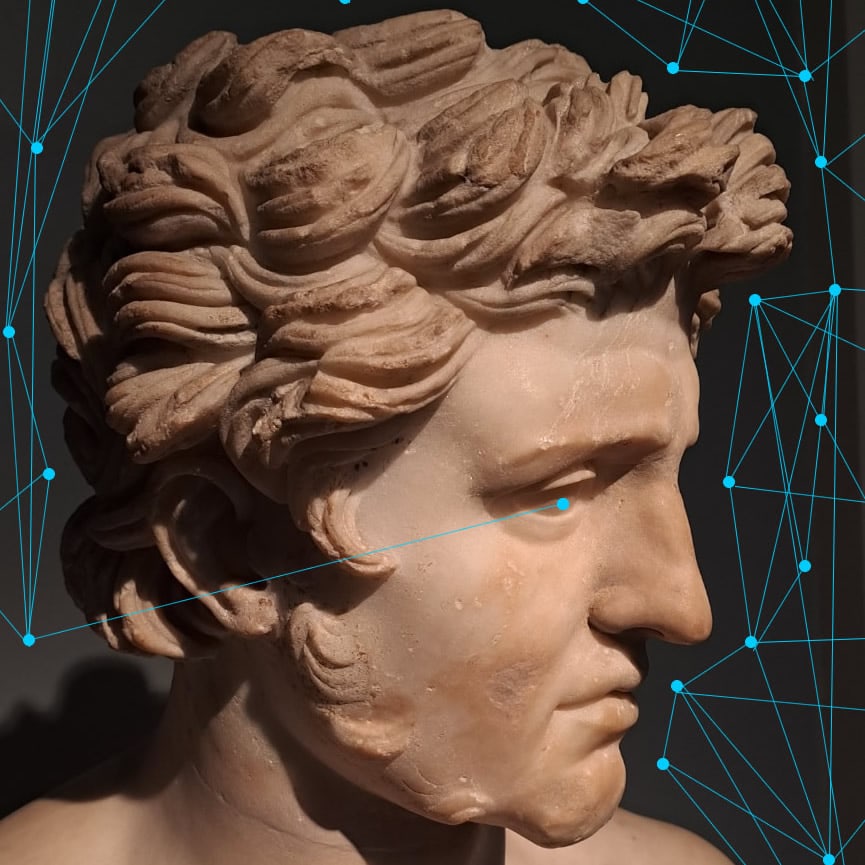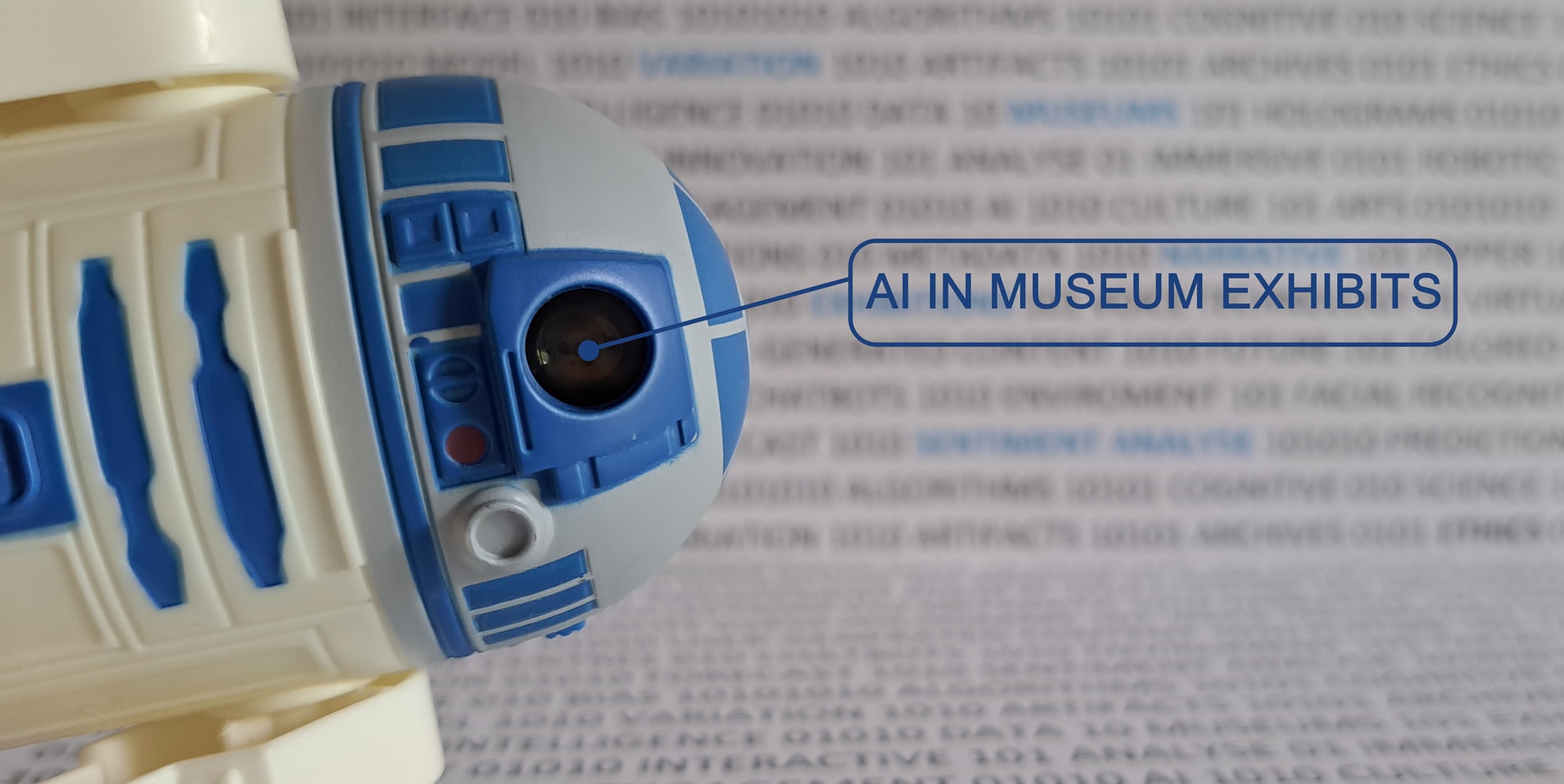AI and Interactive Museum Exhibitions
How is AI Changing Interactive Museum Exhibitions and Visitor Centres?
Robotics and artificial intelligence (AI) technologies are becoming the new norm in museums and cultural industries. The museums of the future are already here, and they are buzzing. Let’s look at how to create an interactive museum exhibit with AI integration.
With AI-powered technology, we can create personalised, immersive experiences and interactive museum exhibitions that monitor individuals’ attention spans and preferences. When used appropriately, AI should provide each visitor, child to scholar, a more rewarding and memorable experience.
Furthermore, visual AI displays can provide an easily accessible and new interactive vessel to explore digitalised art collections. AI is endlessly changing today’s world, and its impact is massive. Cultural and heritage sectors are plugged into the AI environment and enhance visitor experiences in many intelligent ways. Here is a list of 20 ways museums are currently integrating artificial intelligence:
20 ways museums are using AI
- Visitor feedback analysis
- Improving metadata in collections
- Analysing and predicting visitor attendance, physical and online
- Personalised tour guide robotics
- Virtual assistance in native languages
- Chatbox and visual characters’ interactivity
- Pepper robots
- AR (Augmented Reality) immersions and narrative experiences
- Analysing visitor behaviours, for example, in a museum gift shop
- 3D holograms interactives
- Analysing the attention span of individual visitors, for example, by age
- Integration of voice technology within collections’ data
- Virtual museums and art galleries to boost digital footprint
- Utilising facial recognition to customise interactive exhibits
- Robotics providing exhibit translations
- 360-degree virtual reality immersive simulations
- Evaluating visitor flow to enhance signage and wayfinding
- Live displays (visual and textual) of UGC (User Generated Content)
- Interactive conversations between AI and visitors
- Welcoming interactive AI displays answering FAQs
Artificial Intelligence and the Future of Interactive Museum Exhibits
Imagine you are presented with an exhibit display and information effortlessly tailored to your explicit needs and requirements. With this approach, the experience and interactive museum exhibition design will relate to your senses, bringing your custom-made story to life. No individual is precisely alike. Therefore, customising an exhibition visit could ensure a far more enjoyable museum experience.
For example, there is little point in showing children scholarly information and technical language; you will lose their attention right away and worse, it could even cause frustration. With the help of artificial intelligence, the information provided can factor in age, interests, native language, preferences, and academic abilities. AI technology can reflect all these parameters to fine-tune audience interaction and make bespoke recommendations. Likewise, it can undertake a sentiment analysis. This means AI can examine if you enjoy a specific piece of art by your facial expressions, such as raised lip lines (your smile) or confusion when you raise one eyebrow higher than the other.
The best way to experience any exhibition or museum display is to have a personal curator, tour guide or museum docent. They are the expert storytellers of all timelines. By using AI robotic technology, such as a Pepper Robot (the social humanoid robot), we can now all enjoy interactive experiences tailored to our exact needs.
Interactive Museum Exhibitions Displays – How Do You Make an Interactive Museum Exhibit?
Presently, we are working on smart showcases and state-of-the-art interactive displays. These intelligent displays can change language, visual graphics, lighting, and academic content to suit the visitor. Are you visiting a museum and not sure where to go? Just ask for the AI interface, which will ensure a helpful experience.
AI interfaces have already been seamlessly integrated into our homes with virtual chat assistants, smart home devices and digital voice recognition. Consequently, it makes perfect sense for museum exhibitions and visitor centres to adopt a similar approach within our growing digital world.
In a general visitor experience, much time can be wasted locating artefacts or information. This experience can often be unsatisfying and tiring, especially for children. Thus if artificial intelligence can save us valuable time while ensuring a more pleasurable experience, it is a win-win situation.
Additionally, AI can be connected to innumerable new AV, sound and display technologies. It can transform spaces into interactive and immersive experiences through augmented and virtual reality. Each zone can communicate with its visitors bi-directionally, opening audible and visual doorways to extraordinary subjects, times, and places to fire our wildest imaginations. The potential of AI, both scientifically and educationally, is only at the beginning. Shortly, your museum visits will be like none you have ever experienced. Are you ready?

The Future of AI in Museums
Understandably, AI technology comes with many ethical questions as well. What about your privacy and autonomy? Who is accountable? These moral concerns will bring their research and challenges to the museum sector. Therefore, we should not pull the plug on low-tech and hands-on interactives yet. Visitors still enjoy the creative freedom of touching, drawing, and lifting flaps to unravel stories.
Previously, we discussed the benefits of High Tech versus Low Tech in museums; however, with the introduction of AI, it’s a whole new data-driven ballgame.
Artificial intelligence is vital in the global interactive museum exhibition design sphere. Undoubtedly, AI-powered visitor-generated experiences will continue changing how audiences interact with and enjoy cutting-edge museum exhibits. By making environments more accessible, innovative, and tailored, generations can appreciate art and culture.
The future of AI in museums and its magnetic potential will alter the fundamental ways visitors nowadays interact with experiences and exhibitions. We hope its forthcoming value is exhilarating and AI in museums will continue to bring stories to life in the future, of the present and past.
author: Tamara De Schepper

